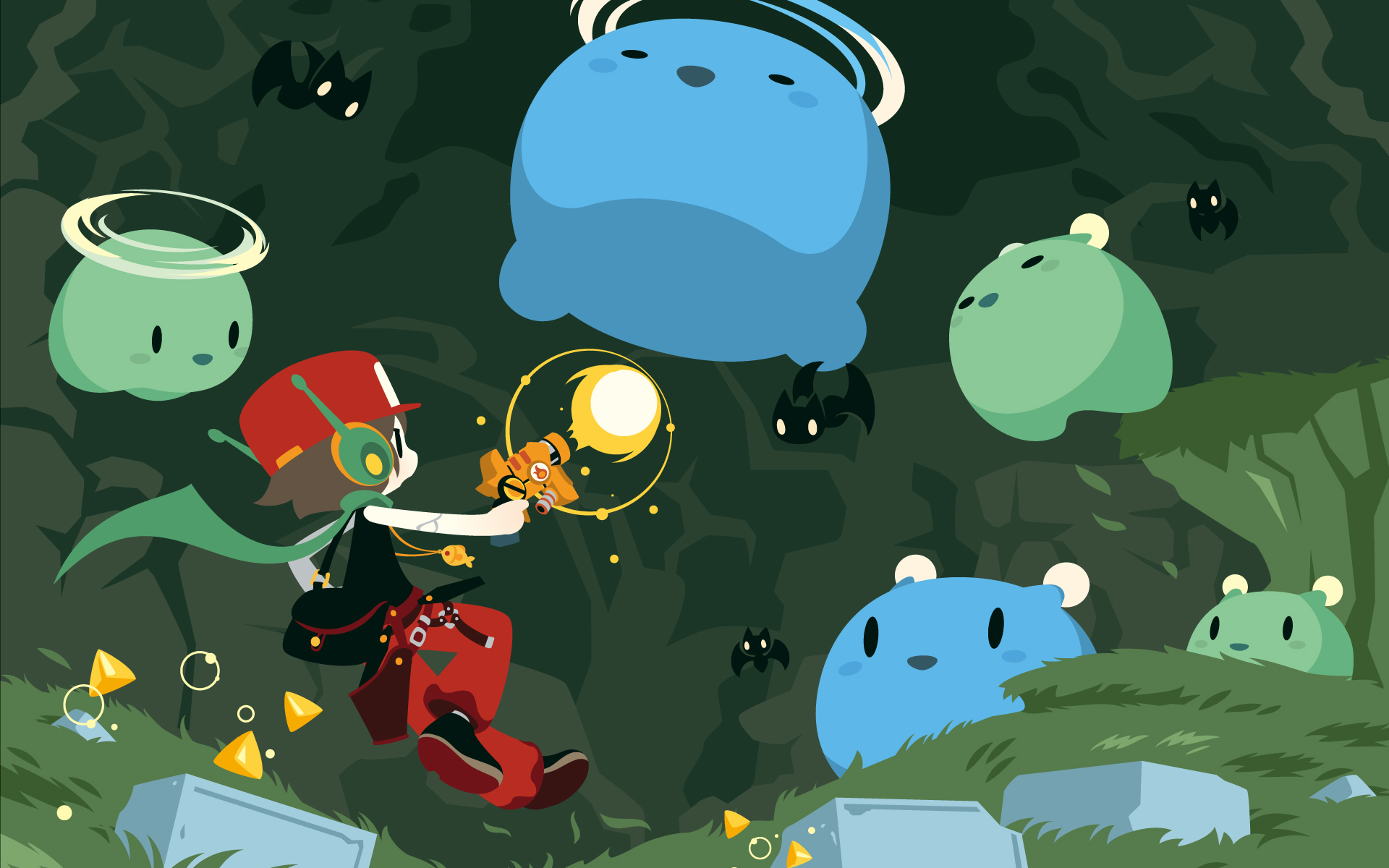Cave Story+
Cave Story (洞窟物語 Dōkutsu Monogatari) is a Metroidvania platform-adventure video game released in 2004 for Windows PCs. It was developed over five years by Japanese developer Daisuke "Pixel" Amaya in his free time. Cave Story features 2D platform mechanics and is reminiscent of the games Amaya played in his youth, such as Metroid and Castlevania (both 1986). After its initial self-published release, the game slowly gained popularity on the internet. It received widespread critical acclaim for many polished aspects of its design, like its compelling characters, setting, story, and gameplay. Cave Story is considered by many as the quintessential indie game because of its one-man development team and influence on the gaming world. Independent developer Nicalis worked with Amaya to port the game to WiiWare and DSiWare in 2010. An enhanced version, Cave Story+, was released for Steam in November 2011, and for the Nintendo 3DS in October 2012. A 3D remake of the game, titled Cave Story 3D, was developed by Nicalis and published by NIS America for the Nintendo 3DS in November 2011. A port of Cave Story+for the Nintendo Switch was released in June 2017. The fast-paced gameplay of Cave Story revolves around Quote, a robot who wakes up suffering amnesia who must explore and blast his way through cavernous areas in order to figure out who he is and what he is and his backstory. The character gains access to new areas as he powers up his weapons and solves various platforming puzzles. Quote speaks to non-player characters scattered around the game world in order to learn more and more about the world and its inhabitants. The player controls the on-screen character directly using the keyboard or gamepad. The player progresses by navigating platform game puzzles and shooting enemies with the equipped weapon. When the player collects multiple weapons, they may be toggled at any time with the press of a button. Defeating enemies sometimes yields yellow triangular objects, which give experience points to weapons when collected. Weapons may be improved up to level three, but taking damage causes weapons to lose experience and levels. Health and missile capacity upgrades are scattered throughout the game world. The player must interact with a variety of non-player characters and objects to complete the game.
Cave Story+
Worldwide
4.99€
14.99€ 67% OFF
You may also like these games
Game description
Cave Story (洞窟物語 Dōkutsu Monogatari) is a Metroidvania platform-adventure video game released in 2004 for Windows PCs. It was developed over five years by Japanese developer Daisuke "Pixel" Amaya in his free time. Cave Story features 2D platform mechanics and is reminiscent of the games Amaya played in his youth, such as Metroid and Castlevania (both 1986). After its initial self-published release, the game slowly gained popularity on the internet. It received widespread critical acclaim for many polished aspects of its design, like its compelling characters, setting, story, and gameplay. Cave Story is considered by many as the quintessential indie game because of its one-man development team and influence on the gaming world. Independent developer Nicalis worked with Amaya to port the game to WiiWare and DSiWare in 2010. An enhanced version, Cave Story+, was released for Steam in November 2011, and for the Nintendo 3DS in October 2012. A 3D remake of the game, titled Cave Story 3D, was developed by Nicalis and published by NIS America for the Nintendo 3DS in November 2011. A port of Cave Story+for the Nintendo Switch was released in June 2017. The fast-paced gameplay of Cave Story revolves around Quote, a robot who wakes up suffering amnesia who must explore and blast his way through cavernous areas in order to figure out who he is and what he is and his backstory. The character gains access to new areas as he powers up his weapons and solves various platforming puzzles. Quote speaks to non-player characters scattered around the game world in order to learn more and more about the world and its inhabitants. The player controls the on-screen character directly using the keyboard or gamepad. The player progresses by navigating platform game puzzles and shooting enemies with the equipped weapon. When the player collects multiple weapons, they may be toggled at any time with the press of a button. Defeating enemies sometimes yields yellow triangular objects, which give experience points to weapons when collected. Weapons may be improved up to level three, but taking damage causes weapons to lose experience and levels. Health and missile capacity upgrades are scattered throughout the game world. The player must interact with a variety of non-player characters and objects to complete the game.


